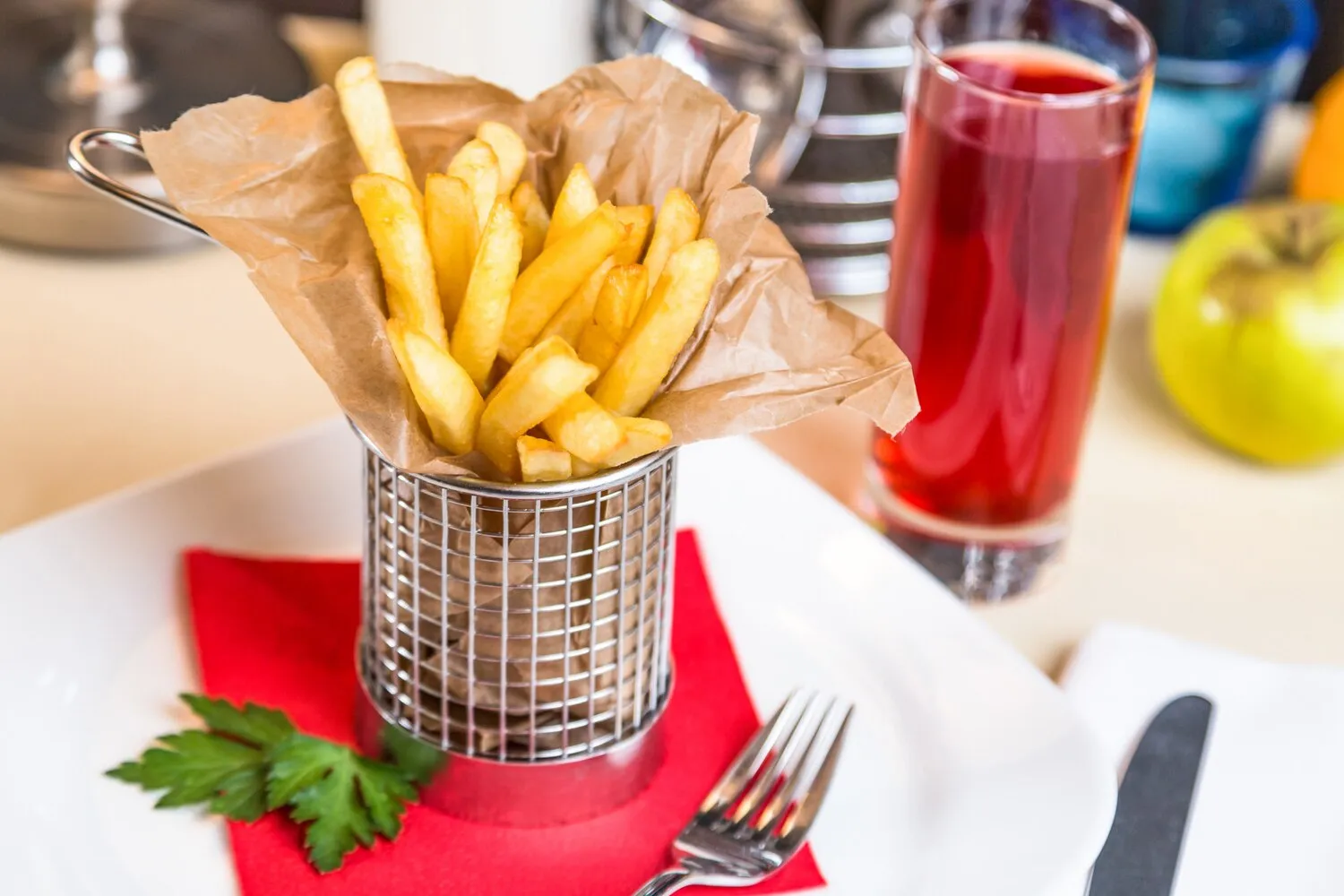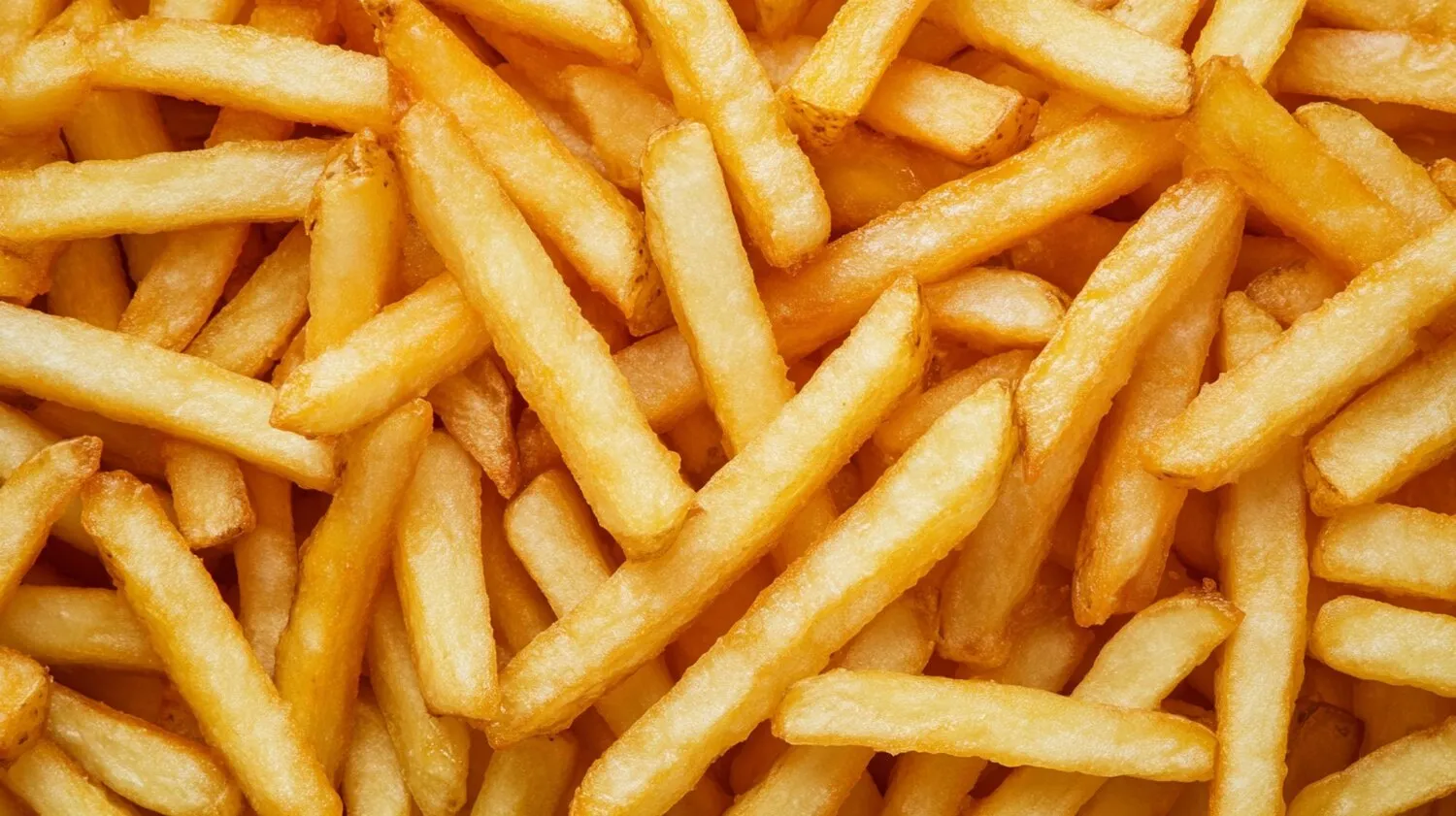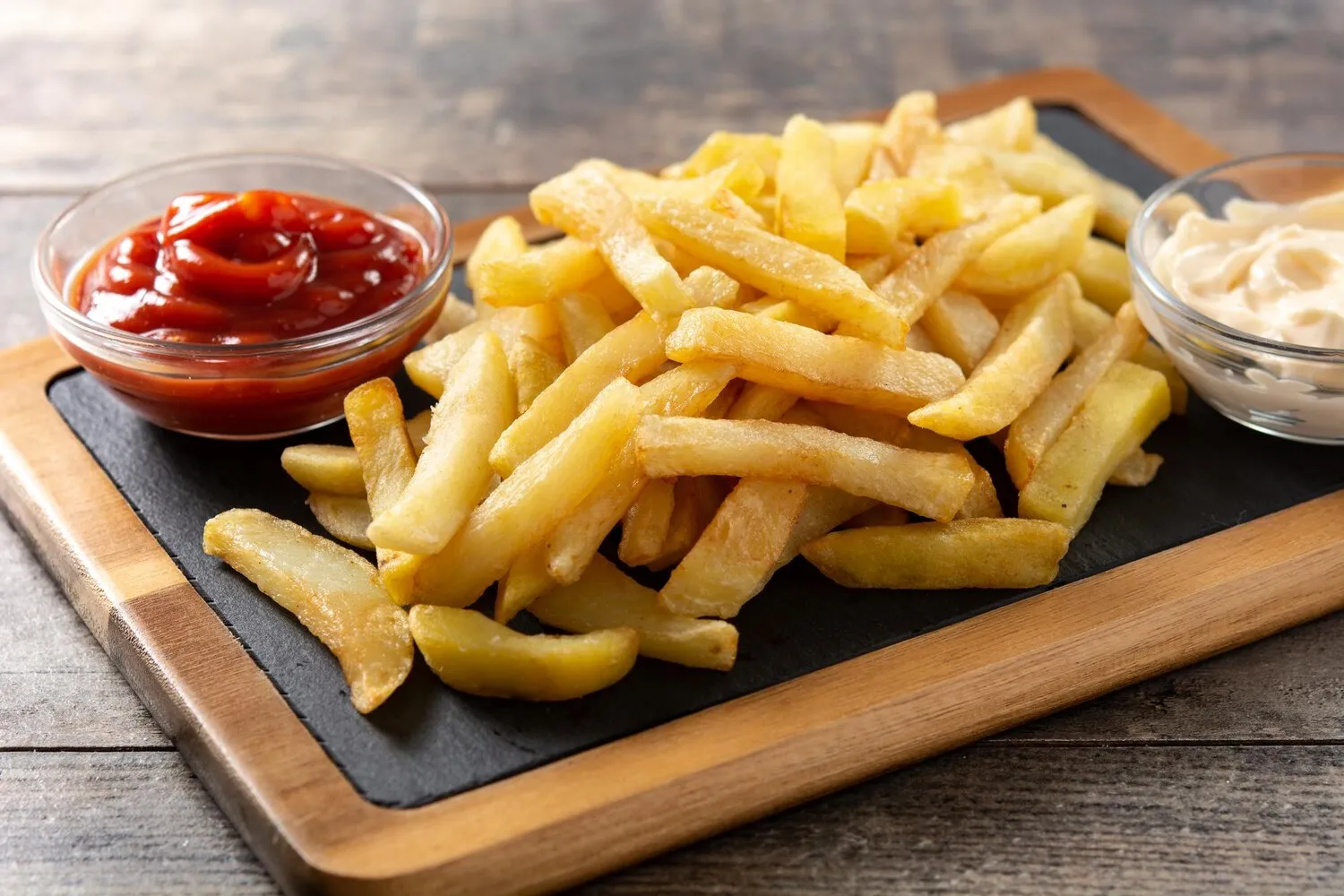
Frites Fraîches
Homemade french fries.
Nutrition Facts
* The % Daily Value (DV) tells you how much a nutrient in a serving of food contributes to a daily diet. 2,000 calories a day is used for general nutrition advice.
While France and Belgium both lay claim to the origin of fries, the dish is widely considered to have originated in Belgium. It is believed that fries emerged in the late 17th century as a cheaper alternative to fried fish, particularly during times when rivers froze over and fishing was impossible. The term 'French' fries may have originated during World War I when American soldiers stationed in Belgium tasted the dish and, because the dominant language in that region was French, mistakenly attributed the fries to France.
Fries are deeply ingrained in Belgian culture, often served as a street food staple and a popular accompaniment to various dishes. They are more than just a side; they represent a national symbol and a source of pride.
Street Food Staple
Friteries (fry shops) are ubiquitous in Belgium, offering fries in paper cones with a variety of sauces. They are a quick, affordable, and satisfying meal option for people of all ages.
Sauce Culture
The sauce is an integral part of the Belgian fry experience. Classic options include mayonnaise, ketchup, and mustard, but a wide range of specialty sauces like andalouse, samurai, and joppie sauce are also popular.
National Pride
Belgians take their fries seriously and are fiercely proud of their fry-making traditions. Disputes over the 'best fries' are common, and the dish is often presented as a symbol of national identity.
Accompanying Dishes
Fries are frequently served alongside dishes like mussels (moules-frites), steak (steak-frites), or various sandwiches, providing a comforting and satisfying meal.
The dominant flavors are potato, salt, and oil. The potato flavor is clean and earthy, enhanced by the salty crispiness achieved through double-frying. The type of oil used influences the subtle background notes, ranging from neutral to slightly nutty.
The primary flavor is undeniably potato, preferably a starchy variety like Russet or Bintje for optimal texture. Salt is crucial for enhancing the potato's natural flavor and creating a satisfying savory taste. The oil used for frying, traditionally beef tallow, provides a richer, deeper flavor. Vegetable oils like peanut, sunflower, or rapeseed oil offer a cleaner, lighter taste. The double-frying process creates a contrast between the fluffy interior and the crispy, golden-brown exterior, enhancing the overall textural experience.
Potato Selection
Choose starchy potatoes like Russet (USA) or Bintje (Europe) for the best results. These varieties have a lower moisture content and will produce fries with a fluffy interior and crispy exterior.
Proper Soaking
Soak the cut potatoes in cold water for at least 30 minutes (or up to several hours) to remove excess starch. This will prevent them from sticking together and help them crisp up during frying. Pat them very dry before frying.
Double-Frying Technique
The double-frying method is crucial for achieving the ideal texture. First, fry the potatoes at a lower temperature (around 300°F/150°C) to cook them through. Then, increase the temperature to a higher heat (around 375°F/190°C) for a second fry to achieve a golden-brown, crispy exterior.
Oil Temperature Control
Maintain a consistent oil temperature during frying using a thermometer. Overcrowding the fryer will lower the oil temperature and result in soggy fries.
Seasoning
Season the fries immediately after frying, while they are still hot, to ensure the salt adheres properly. Consider using sea salt or flavored salts for added flavor.
Resting After Frying
Place the freshly fried fries on a wire rack lined with paper towels to drain excess oil. This will help them stay crispy longer.
Explore additional Side Dish dishes and restaurants
Explore Side DishDiscover top dining spots and culinary experiences in Nancy.
Explore NancyLearn more about the food culture, restaurant scene, and culinary heritage of France.
Explore France

